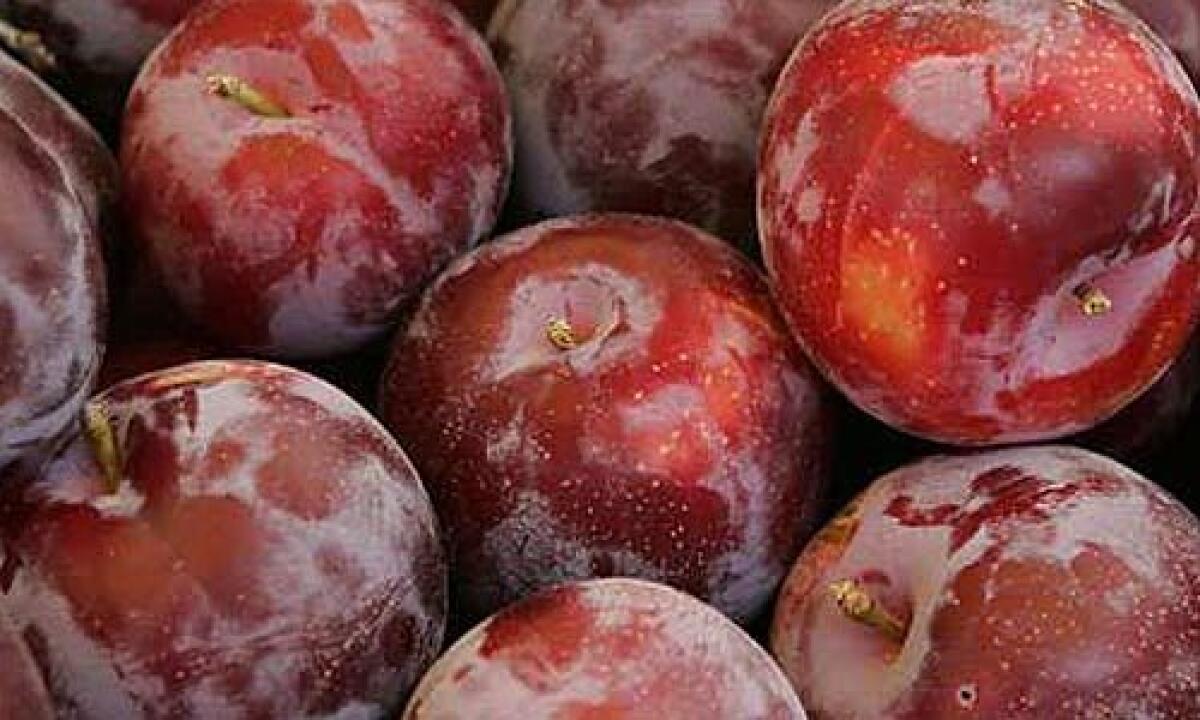Santa Rosa plums: How to choose, store and prepare

- Share via
Luther Burbank was one of the most prolific plant breeders ever, responsible for developing the russet potato that bears his name as well as more than 800 varieties of fruits and vegetables. But while he is probably best remembered for that potato--it and its progeny are still the most widely planted varieties in the world--fruit lovers would argue that his crowning achievement was the Santa Rosa plum. Introduced in 1906, the Santa Rosa is still the gold standard for farmers market plum flavor, though it has fallen out of favor commercially. As late as the 1960s, the Santa Rosa still accounted for more than a third of California’s plum harvest; last year, it had dropped to only a percent or 2, as growers have abandoned it in favor of bigger, firmer fruit. Fortunately, they are still available at farmers markets. And after you bite into a rich, tangy Santa Rosa, almost anything else tastes insipid.
How to choose: Santa Rosas should be slightly soft and fragrant. If there are white spots on the skin, don’t worry. Those are just naturally occurring yeasts that have collected there. Actually, it’s a good indicator that the fruit hasn’t been overhandled.
How to store: If they’re a little too firm, leave plums at room temperature for a day or two and they’ll continue to ripen. Once they’re fully ripe, refrigerate them.
How to prepare: Plums make terrific crisps--chop them, sweeten them with a little sugar and toss with a little flour or cornstarch to thicken the juices. Put the plums in a baking dish and top with a crumbly mixture of ¼ cup butter, ½ cup flour and ¼ cup sugar that you’ve cut together in a bowl or in a food processor. Bake at 350 degrees until the fruit is melted and fragrant and the topping has browned and crisped.
More to Read
Eat your way across L.A.
Get our weekly Tasting Notes newsletter for reviews, news and more.
You may occasionally receive promotional content from the Los Angeles Times.








